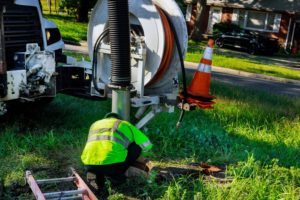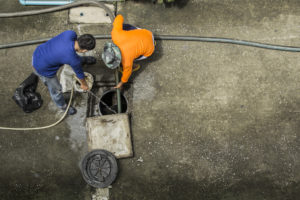When it rains, it doesn’t always pour. However, water collecting and building up on your property that doesn’t have a proper place to drain can be harmful!
Stormwater can contain components, such as sediment, nutrients, bacteria, trace metals, oil, grease, and pesticides. Ensuring that your stormwater is being properly drained is very important when it comes to preserving your property.
What is a Stormwater Drainage System?
Stormwater drainage installation typically refers to the construction of systems that manage the flow of rainwater. These installations are designed to collect, store, treat, and release stormwater runoff in a way that minimizes negative impacts on the environment, infrastructure, and public health.
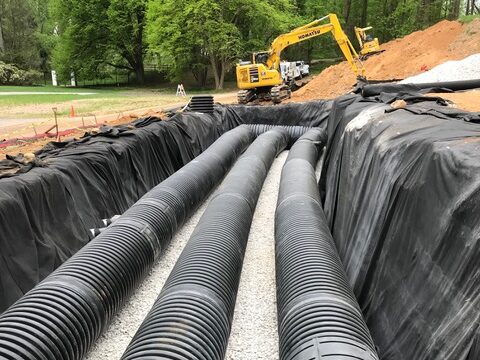
The purpose of stormwater installations is to prevent flooding and erosion, protect water quality, and reduce the amount of pollution that enters local waterways. By capturing and treating stormwater runoff, these installations can help to mitigate the effects of urbanization and reduce the impact of human activities on the natural environment.
Storm Drains
A storm drain is a system of pipes and structures designed to manage and control stormwater runoff in urban areas. The primary function of a storm drain is to collect rainfall and other forms of precipitation that fall on impervious surfaces, such as roads, parking lots, and rooftops, and divert the runoff to a nearby water body or treatment system.
Storm drains typically consist of a network of underground pipes that are connected to catch basins, which are designed to capture and filter sediment and debris from the stormwater runoff. The pipes may be made of various materials, such as concrete, plastic, or metal, and are typically sized based on the expected volume of stormwater runoff.
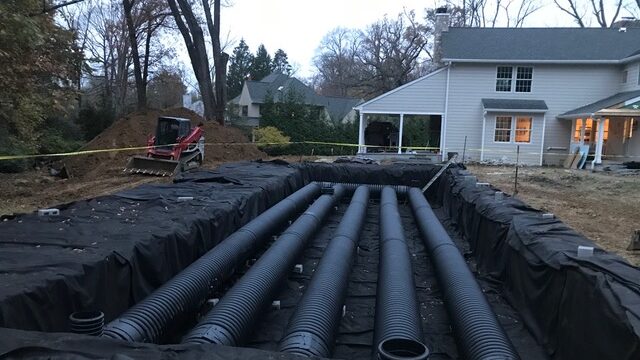
In addition to the underground pipes and catch basins, a storm drain system may also include other features, such as curb inlets, drop inlets, and manholes, which provide access to the system for maintenance and cleaning.
Storm drains are an essential part of urban infrastructure, as they help to prevent flooding and reduce erosion by managing the flow of stormwater runoff. However, it’s important to note that stormwater runoff can also carry pollutants and contaminants that can harm water quality and ecosystems. Therefore, proper storm drain design and maintenance is critical to ensuring that the system is functioning effectively and that the environmental impacts of stormwater runoff are minimized.
Surface Drains
A surface drain is a type of drainage system that is designed to collect and remove excess water from the surface of an area, such as a paved courtyard, a parking lot, or a lawn. Surface drains are typically installed at a low point in the surface to capture water and divert it away from the area, preventing flooding and water damage.
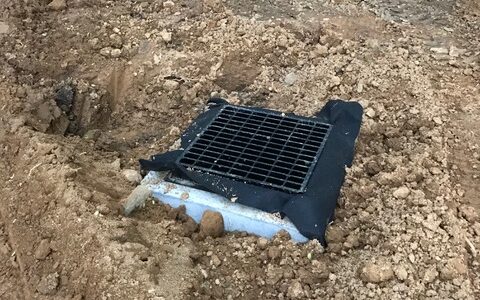
Surface drains can take many different forms, depending on the specific needs of the site and the type of surface being drained. Common types of surface drains include:
- Trench drains: These are long, narrow channels that are typically installed in pavement or concrete surfaces. They are designed to collect water and transport it to a collection point or a storm drain system.
- French drains: These are trenches filled with gravel or rock and perforated pipes that are used to capture and transport subsurface water. They can be used to drain areas where standing water is a problem or to divert water away from a structure.
- Catch basins: These are typically installed in parking lots or other paved surfaces and are designed to capture water and sediment. They are connected to underground piping systems that transport the water to a storm drain system.
- Grates and inlet filters: These are installed at low points in the surface to capture water and debris. They are often used in conjunction with other surface drains or stormwater management systems.
Surface drains are an important part of urban and suburban infrastructure, as they help to prevent flooding, erosion, and water damage by managing the flow of surface water. Proper design and maintenance of surface drains is important to ensure that they function effectively and minimize the environmental impact of stormwater runoff.
Stormwater Services
At Delaware Valley Septic, Sewer & Storm, we take time to meet with and educate our customers on which solution will work best to solve their specific drainage needs.
Contact us today for more information and to learn how to get started on your drainage solution project!


